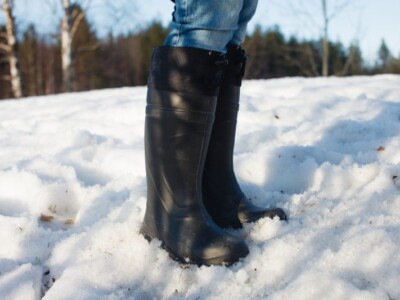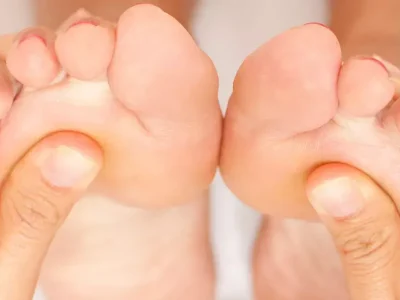Athlete’s Foot
Athlete’s foot is a fungal infection of the skin that can lead to intense itching, cracked, blistered or peeling areas of skin, redness and scaling. It can occur on moist, waterlogged skin, usually between the fourth and fifth toes initially, or on dry, flaky skin around the heels or elsewhere on the foot. Large painful fissures can also develop and the condition can also spread along all five toes and sometimes to the soles of the feet if left untreated.
Who gets athletes foot?
It’s not called athlete’s foot for nothing! Walking barefoot around swimming pools and spending your life in trainers may make you more likely to pick it up, but you do not need to be an athlete to get this condition.
Is athlete’s foot serious?
If left untreated, the fungus can spread to the toenails, causing thickening and yellowing of the nail, which is much harder to treat. Fungal infections are highly contagious and can spread to anywhere on your skin – including your scalp, hands, and even your groin. This is especially likely if you use the same towel for your feet as for the rest of your body. It is always best to treat this condition as soon as symptoms are first noticed.
How can I prevent it?
The most important tip for preventing athlete’s foot is to ensure your feet are completely dry after washing them and before you put your shoes and socks on. However, there are many things you can do to make your feet less hospitable to fungal infections.
-
Firstly, change your footwear regularly. There’s no point sorting your feet out if you constantly re-infect them by putting them into damp, fungally infected shoes. It takes 24-48 hours for shoes to dry out properly, so alternate your shoes daily.
-
If you have to wear the same pair day after day (say, if you’re on holiday), dry them out by using a hairdryer on a cold setting; this will get rid of the perspiration quickly without creating more heat. To help shoes dry out more quickly, take any insoles out. Also, loosen any laces and open your shoes out fully so that air can circulate. Choose trainers with ventilation holes.
-
If your shoes are so tight that they squeeze your toes together, this encourages moisture to gather between your toes and encourages fungus. Let air circulate between the toes by going for a wider, deeper toe box instead and choose shoes made from natural materials. Of course, you should also change your socks daily.
-
Wear flip-flops in the bathroom and in public showers. This will ensure that you don’t leave shed skin around for others to pick up, but will also stop you from picking up other species of fungus.
Book a Podiatry Appointment
OTHER CONDITIONS WE TREAT
What our clients say









